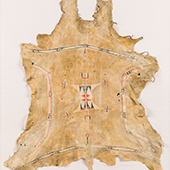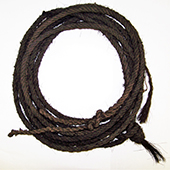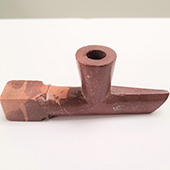Beadwork
Before European contact, Plains artists used dyed quills and native beads to embellish clothing and containers. However, once white traders reached the area, their factory-made beads quickly gained prominence. Early trade beads were comparatively large, but by 1830-1850 smaller beads, like the donut-shaped ones used on these pieces, known as seed beads, became common. These glass beads come in more than 80 colors and a variety of sizes. Detailed work in the smallest beads is the most prized.
There are 3 main beading techniques used by Plains Indians:
- Sewing – There are two subtypes of sewing. Overlay involves tacking or spot-stitching long strings of beads onto the surface to be decorated. This is especially convenient for curvilinear designs like flowers. Lazy stitch involves short strings of a few beads tacked next to each other. It is commonly used for geometric patterns and allows larger surfaces to be covered with comparatively less effort.
- Netting – With this technique, a mesh of beads is created by starting with a row of beads and then sewing the succeeding rows to each other one bead at a time to create a network of interlocking beads. This method is also known as gourd stitch because it is often used for covering curved surfaces like rattles.
- Weaving – This technique involves beaded threads woven through a set of plain threads using a needle on a simple loom. In this way, a stand-along band of beadwork is created, which can be sewn to a cloth backing and then attached to a shirt or other item. This method is almost exclusively used to create geometric patterns.
Over time the Plains nations each developed distinctive styles of beadwork with a limited number of acceptable design elements and preferred colors. There was no overarching language of beading in the Plains region. Standard design elements could mean different things to different artists. For example, a triangle could represent a tipi or an arrow point. The inspiration of the individual artist was most important. Customarily, artists included a tiny mistake somewhere in their work to suggest the idea that nothing made by human hands is truly perfect. Many artists continue traditional beading today, keeping the art form alive.
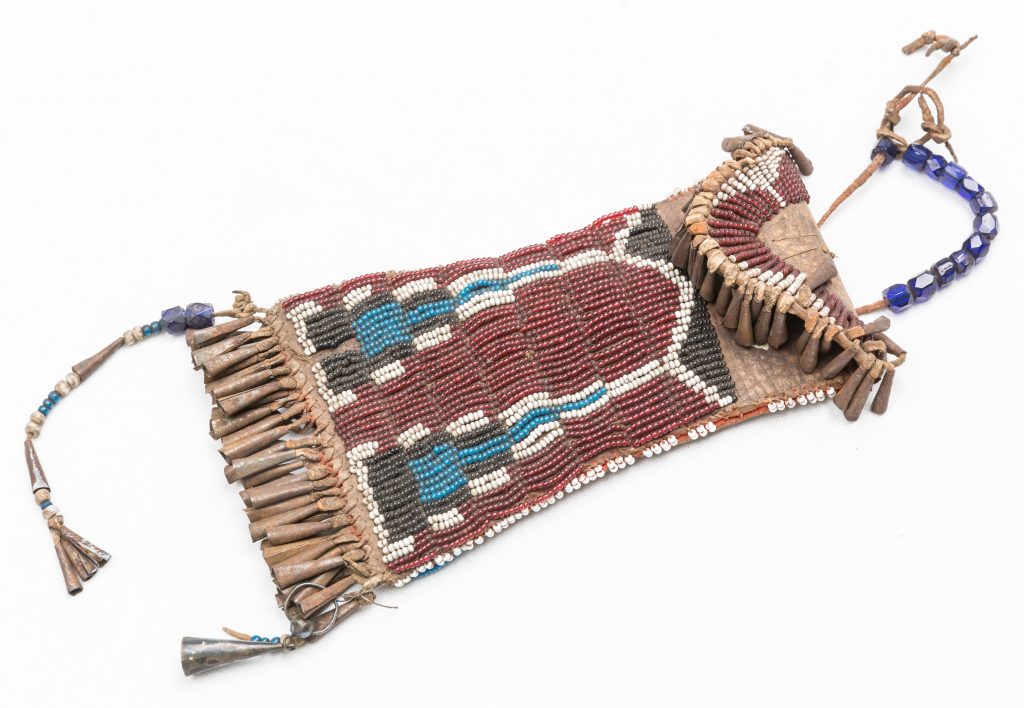
Strike-a-light Bag
Kiowa
1885
1984.E.0659
This small pouch was used to carry fire-starting tools including pieces of flint and steel and some small fibers that would light quickly. Cases like this one were also popular as personal adornment for men and women. Men often attached them to their quivers, while women and girls wore them as belt ornaments. The use of lazy stitch to create the relatively simple beadwork design on this case is clearly visible. Kiowa strike-a-light cases commonly have tin cones or bells attached to the fringe on the flap and bottom of the pouch, as shown here. The tin often came from salvaged food or ammunition cans.
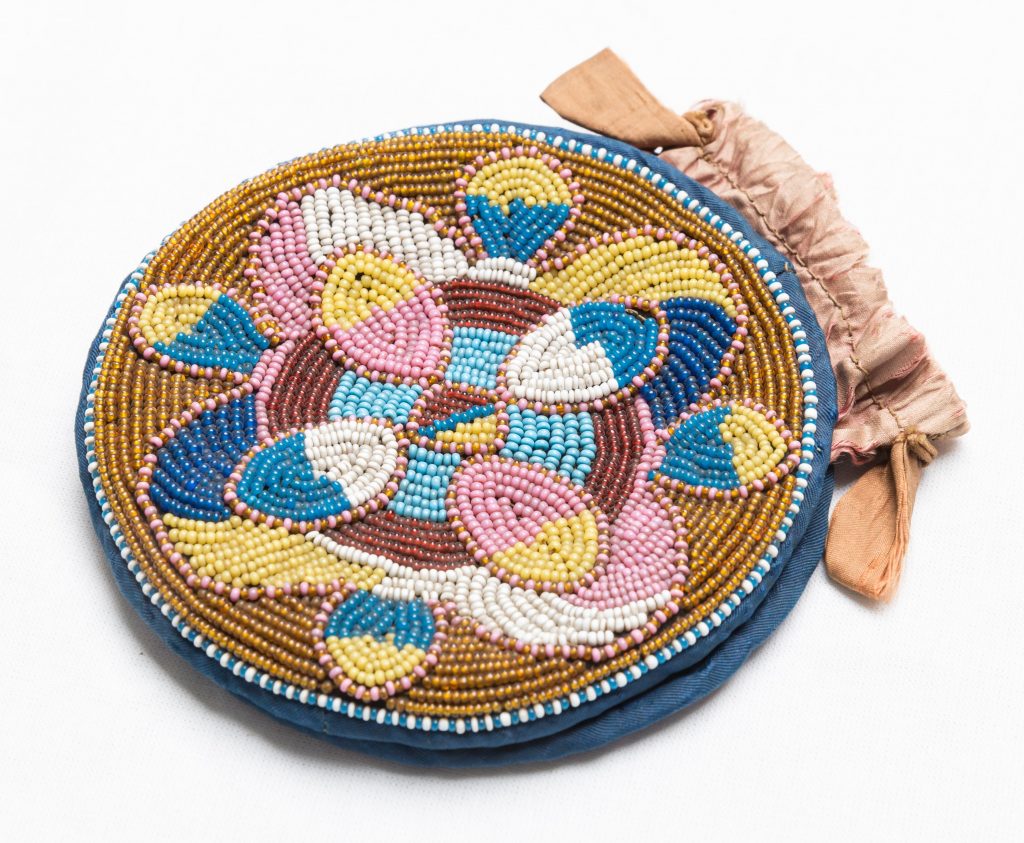
Purse
Northern Plains
Late 19th – Early 20th century
1984.E.0658
The floral-inspired design on this small beaded purse reveals the influence of Woodland tribes on artists in the Plains region. This inspiration can be found in the work of a number of tribes across the Plains, both those with historical Woodland heritage and their neighbors who adopted the designs.
Moccasins
Moccasins are the typical footwear for Plains Indians, as well as other Indigenous groups across the United States. There are two main types of moccasins, both found on the Plains, and both represented here. Moccasins that use one sheet of buckskin to wrap entirely around the foot creating a soft sole come from the eastern Woodland nations. The piece of skin is sewn closed at the toe and along the outside. Hard moccasins, which originated in the Southwest, have separate stiff rawhide soles that are sewn to soft buckskin uppers. Leather thongs are added for lacing on both varieties. Each nation has distinct shaping or other features to aid in identification. Elaborate beading was common on moccasins used for festivals and ceremonies, while everyday shoes were usually much more plain.
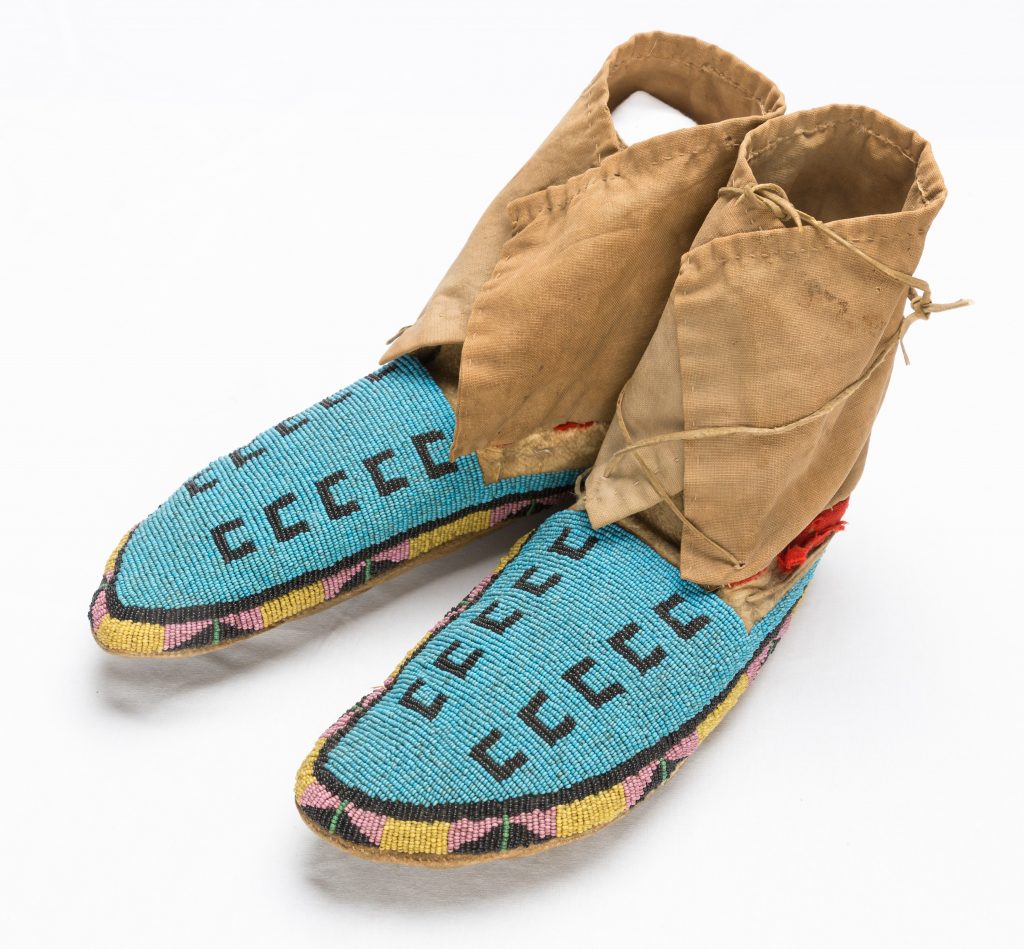
Moccasins
Cree
Late 19th – Early 20th century
1999.15.E.1.a&b
These soft moccasins were made for the cold weather found in the northern home of the Plains Cree. They have high tops and long laces that wrap around to protect the wearer’s ankles from the cold. They are also cut large to fit over inner insulation made from buffalo fur, leaves, or sagebrush bark.
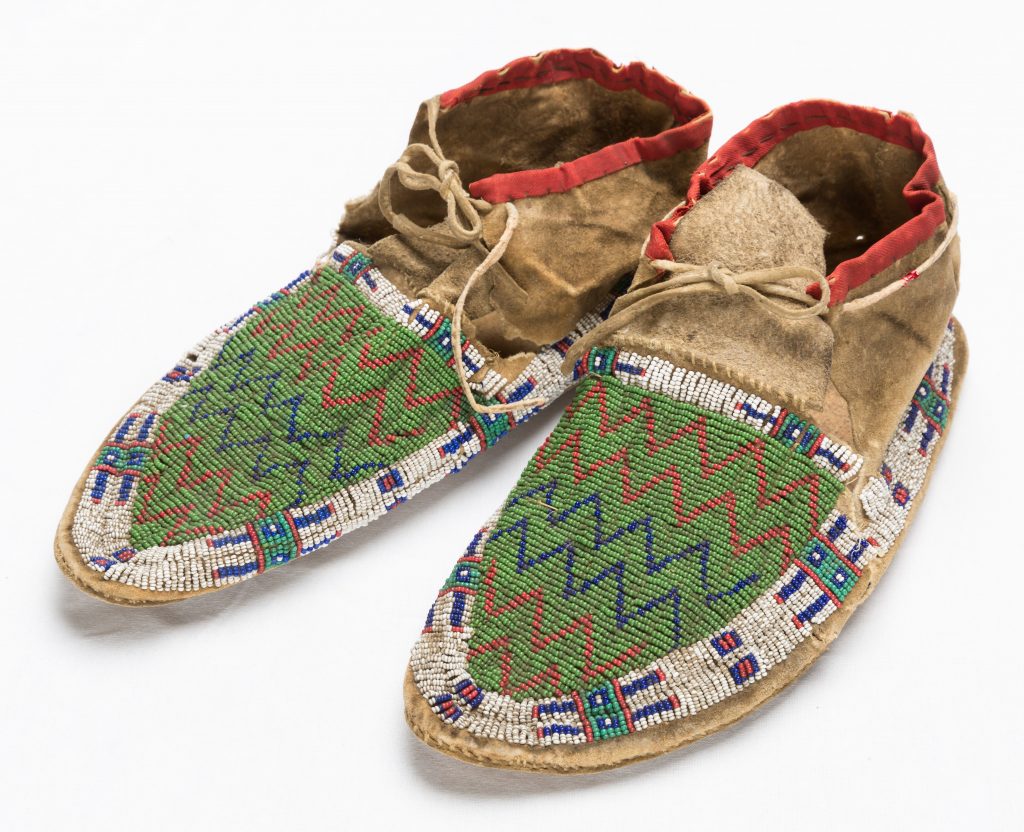
Moccasins
Lakota Sioux
circa 1880
2011.05.E.01.a&b
These Lakota hard moccasins are rumored to have belonged to Chief Sitting Bull. They were displayed for many years at the Burdine Saloon in Washington, D.C., after Sitting Bull stayed at the adjoining Pennsylvania Hotel.
This is one of two artifacts in this exhibit that have purported ties to Lakota Sioux Chief Sitting Bull (1831-1890). As one of the most recognized Native Americans of his time, through widespread press coverage of the so-called Indian Wars and via his later appearance in Buffalo Bill’s Wild West Show, there are no doubt hundreds of objects across the country that are rumored to have connections to Sitting Bull.
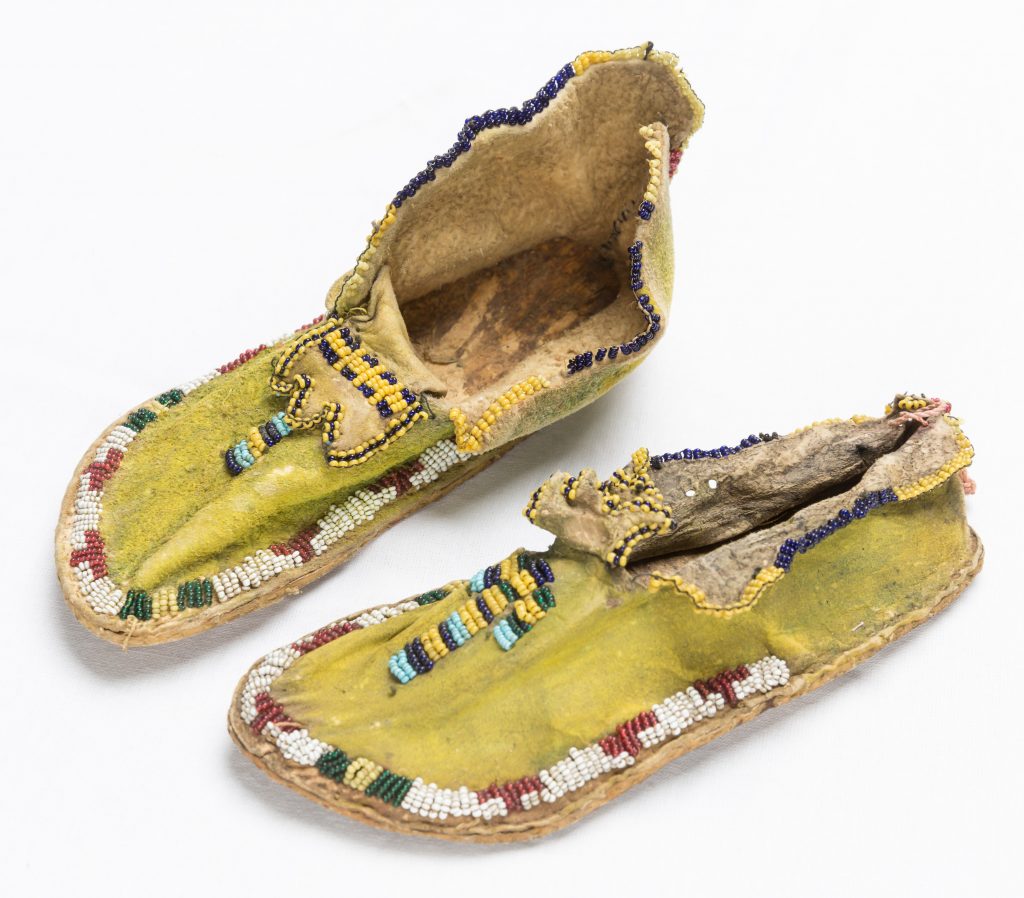
Moccasins
Lakota Sioux
circa 1880
2011.05.E.02.a&b
These child’s hard moccasins feature a common Sioux design of stepped triangles on a while background in the border. The greenish-yellow staining on the leather is also indicative of Lakota work in the 1880s.
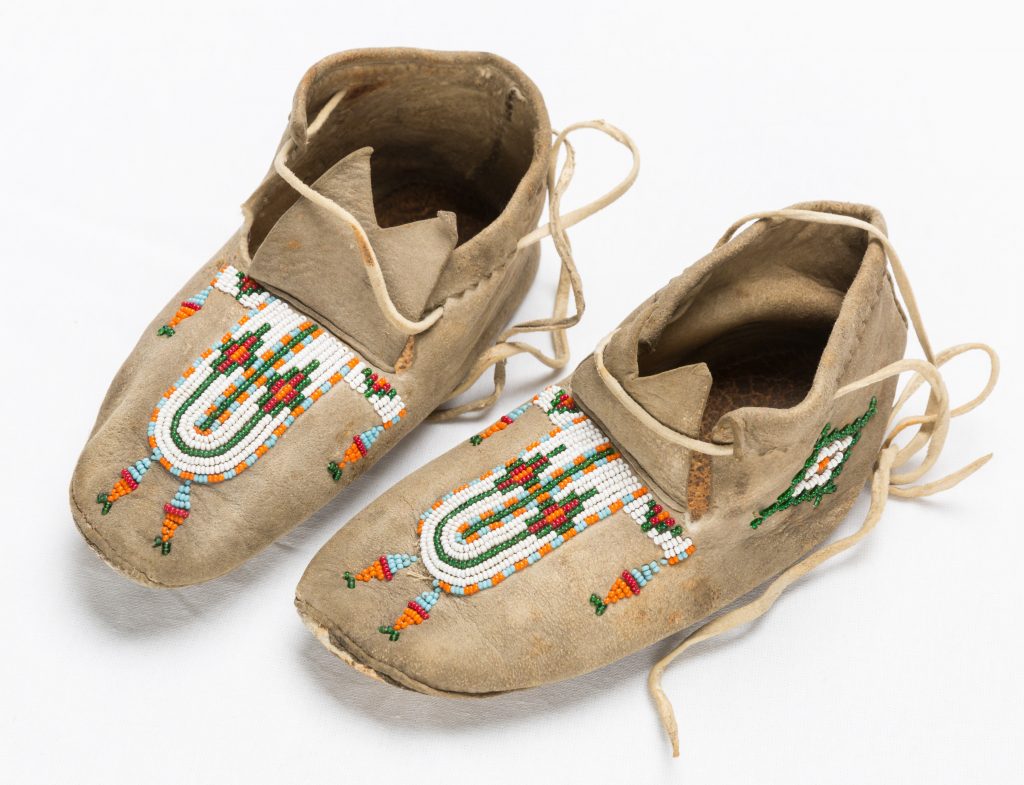
Moccasins
Plains
20th century
2012.04.E.07.a&b
Although their tribal affiliation is unknown, these child’s soft moccasins show some wear from use.
Explore the other sections of this exhibit below
